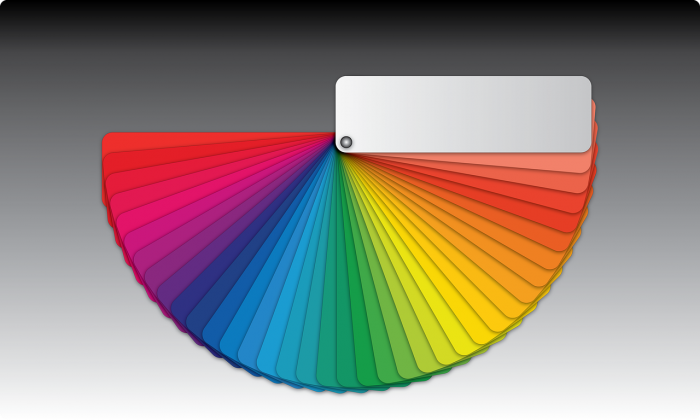Greg graduated sales school at the top of his class and was eager to start his new career in Tennessee. His strength was his ability to connect with people, and much was expected from his sales manager.
He met with a prospect in Birmingham, Alabama that wanted a presentation on why his computers were superior to the competition. Fresh out of sales school, the answer was an easy one for Greg. He decided to focus on what was considered his company’s unique differentiator—technology. Even though Greg is a relationship person, he decided to answer with the facts since he thought that was what the prospect wanted. The common question the prospect had: “Why should I do business with you?”
Greg’s response: “Our products can move from a PC to a mainframe and never change operating systems; saving you hundreds of thousands of dollars.”
But Greg misread the situation.
That’s not what the customer wanted. Instead he wanted to get to know Greg to build trust. He wanted to know Greg was there for him whenever he needed information, advice, or just someone who would go to bat for him.
Unfortunately, sales professionals don’t get a second chance at a first impression, so Greg was not able to establish the relationship the prospect was looking for. This opportunity sailed into the sunset never to be seen again.
What should Greg have done? What does it take to establish a relationship with others? The first key to effectively building relationships is to identify the personality style of your prospect.
Most personality models have four styles. This one is based on colors, as it’s easy to remember a face with a name and with a color. It’s also easier to remember the characteristics of a color than an acronym or a name. Blue (the people person), Gold (the planning person), Green (the perfection person) and Orange (the performance person).
Values of Colors
One of the differentiators between the four personality styles is in what they value. As a sales professional you must adjust how you present the value of your offering based on which personality style you believe they are.
Blues will not make a commitment until they know you and trust you. For the Blue personality, relationships come first. Because trust is paramount, you must never pressure the Blue. They might view this as selfish on your part.
Golds value commitment and follow through. They expect detailed information on your company and its track record. Golds value timeliness and a tight process, and believe that you say what you’re going to do and do what say.
Greens value details and facts. They will take their time to analyze every aspect of your company’s offerings and how the value equates to their future vision. Expect many questions from Greens since they are skeptical by nature.
Oranges value winning and performing. They look for the immediate results and want to look good inside of their organization. They also value relationships, but it’s based on convenience and easy access to the sales person.
Remember the key is to connect with their style, not yours.
Color Communication
Communication is the next key to connecting with prospects and customers. And, as you can guess by now, each style has a different preference.
Blues ask questions about you so they can build trust. Small talk is very important and can focus on the personal side. Family, friends and acquaintances are important to the Blue personality. Blues are also indirect in the communication which means they will elaborate on what they say. Don’t rush the communication with Blues.
Golds are more methodical and direct in the approach. Golds are excellent listeners and will balance the communication. They are structured and prefer an agenda and a reason to have a discussion and are more formal in their approach.
Since Greens are the analytical type, they will ask questions on the details of your products and services. Getting personal is not a priority for the Green. Understanding your offerings and how they might solve issues is their top priority. They are succinct in their approach but can be indirect as they expand on what they are looking for. You must have facts to prove your point of view to the Green.
Oranges communicate by wanting to get the bottom line. They are big picture oriented and like to be the center of attention. Therefore, let the Orange do most of the talking. Oranges are also direct in their approach. They will tell you exactly what they are looking for.
Communication is about balancing the conversation. Blues and Greens tend to ask questions, while Golds and Oranges tend to tell or prefer to lead the conversation. So as you converse with different styles you need to be aware of what they prefer so you can adapt to their style.
Selling Across the Spectrum
Every sale requires a decision, so understanding when to ask for commitment is crucial and must consider the style of the prospect. So as we looking at selling across the spectrum here is an approach to take.
Blues and Greens tend to be slower in finalizing their decision. Give them space to make the decision and when you feel it’s time to help them ask: “What would you like to do for next steps? What else can I provide you in moving forward?” Being too aggressive with these two will lose the sale. They need their space.
Golds and Oranges are more decisive. It’s fine to ask these colors for a decision. Ask the Gold when they plan to make their decision, and with the Orange, tell them you can get started today since they look for immediate benefits.
People tend to sell from their point of view. The best thing you can ever do is ask yourself, “Who am I with?” Pay attention to their words and actions; keeping the focus on them will help you understand the approach you should take. Using their style will build trust, gain you credibility and will move you closer to the sale. Remember this: it’s not what customer’s buy, but why. Knowing their color will help you understand what they value, how they prefer to communicate make decisions.
Good Selling!
Find a Home-Based Business to Start-Up >>> Hundreds of Business Listings.


















































